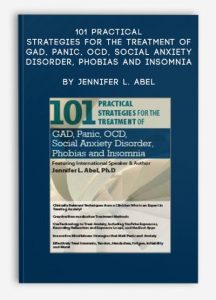 101 Practical Strategies for the Treatment of GAD, Panic, OCD, Social Anxiety Disorder, Phobias and Insomnia by Jennifer L. Abel
101 Practical Strategies for the Treatment of GAD, Panic, OCD, Social Anxiety Disorder, Phobias and Insomnia by Jennifer L. Abel
**More information:
Sale Page
Archive Page
Get 101 Practical Strategies for the Treatment of GAD, Panic, OCD, Social Anxiety Disorder, Phobias and Insomnia by Jennifer L. Abel at
Description
- Clinically Relevant Techniques from a Clinician Who is an Expert in Treating Anxiety!
- Creative Non-medication Treatment Methods
- Use Technology to Treat Anxiety, Including YouTube Exposures,
- Recording Relaxation and Exposure Loops, and the Best Apps
- Innovative Mindfulness Strategies that Melt Panic and Anxiety
- Effectively Treat Insomnia, Tension, Headaches, Fatigue, Irritability and More!
So many times in my practice I’ve met new clients who’ve seen multiple therapists and have tried an array of medications, only to continue to be plagued with unrelenting anxiety. When they show up at my office they are frustrated and nearly hopeless.
After studying the latest research, working with experts in the field, and almost exclusively treating clients with anxiety disorders for more than 20 years, I can help even the most treatment resistant clients.
Since the early days of my clinical career, I have developed creative, yet simple, methods that have been vital to providing relief for chronic anxiety. These techniques are easy to implement and can help your clients quickly achieve therapeutic results.
Watch this video and develop the skills you need to help your clients overcome worry, panic attacks, phobias, OCD, social anxiety and insomnia.
Effectively Target and Transform Clients with Difficult Problems such as:
- Hypochondriasis
- Perfectionism
- Subjugation
- Catastrophizing
- Intolerance of uncertainty
- Procrastination
Through several demonstrations and hands-on exercises, you will develop the skills to help even the toughest anxious and sleep-deprived clients. We will explore progressive relaxation, observation and acceptance strategies, time management, mindful labeling, postponing worry, interoceptive exposure, stimulus control, sleep-restriction therapy and much more.
If you are dealing with clients who:
- Have trouble committing to treatment
- Want to break their dependency on medication
- Can’t sleep despite trying everything
- Believe their panic is medically based
- Trapped in habits that reinforce their fears and anxiety
Then you will be glad you watched the video!
Jennifer L. Abel, Ph.D.
TREATMENT STRATEGIES FOR ANXIETY
Trying NOT to Worry Makes it Worse: The White Bear Research
- Treatments to circumvent the White Bear Phenomenon
- Moving Toward relaxation
- Process vs. command
- Postpone worry
- Acceptance
Mindfulness
- Mindful acceptance:
- 5 metaphors
- Observe and label thoughts and emotions
- Mindfulness as relaxation
- Being in the present
- Active and quiet mindfulness
- Game and demonstrations
Cognitive Therapy
- A quicker and better way – B3s
- Hands-on exercises to find alternative thoughts
- “Shoulds” and “Wants”
- Finding humor in worry
Progressive Relaxation (PR)
- 8 benefits of PR
- Signaling and timing
- Patter
- Debriefing and home practice instructions
- Alternatives to PR -Tin Man to Scarecrow and sponge absorbing tension
Problem Solving Strategies
- Worry prevents problems solving
- Mindfully label problems
- Brainstorming
- Postpone worry to problem solving times
- Problem solving worksheet
Exposure Strategies
- Negative reinforcement in anxiety
- Metaphor – Little Shop of Horrors
- Assess for negative reinforcement
- Remove crutches that negatively reinforce
- Traditional in vivo exposure
- Imaginal exposure
- Video exposure
- Flooding the thoughts and words
- Interoceptive exposure
- Response prevention
Make Your Own Recordings:
- Record for free
- Turn recordings into MP3s
- Make loops for verbal exposure
- Make relaxation recordings
- Transport large MP3s to clients for free
SPECIFIC PROGRAMS FOR ANXIETY DISORDERS AND INSOMNIA
Generalized Anxiety Disorder
- Worry spirals
- 3 benefits of catching anxiety early and evidence this works.
- 12 reminders to catch anxiety early
- Self-controlled desensitization (SCD)
- Applied or active relaxation
OCD
- In vivo exposure and response prevention
- Alternative exposures
- Covert obsessions (normalizing, flooding thoughts and singing words)
- Contamination fears
- Mindfulness and OCD
Panic Disorder and Panic Attacks
- New panic attack specifier
- Interoceptive exposure
- Explain what caused that first panic attack
- Anxiety sensitivity
- When panic looks like OCD
- Anxiety spiral in panic
- Benzodiazepenes make panic worse
- Nighttime panic
Agoraphobia and Specific Phobia
- Rule out fear of panic
- Exposures:
- In vivo
- Imaginal
- Flood the fear verbally
- YouTube and other Internet options
- Three Common Specific Phobias – flying, emetophobia, acrophobia
Social Anxiety
- 3 components of social anxiety: skills deficit, cognitive distortions, physiological anxiety
- Normalize social anxiety
- Social skills training – eye contact, open ended questions, listening, improving affect
- Exposure: in vivo, role play, flooding thoughts
- Coping strategies
- Speech phobia
Insomnia
- Rule out other sleep disorders and medical causes
- Treatments for insomnia:
- Worry postponement and problem solving before bed
- Sleep hygiene and several stimulus control strategies
- Creating a sleep rhythm by addressing schedules, naps and lighting
- The win-win trick
- Relaxation strategies
TREATMENT RESISTANT ANXIETY
When CBT isn’t Effective Enough
- Rule out ADHD, depression and medical issues
- Encourage emotional processing
- Address lifestyle habits
- Psychotropic medications
- When CBT and medication doesn’t work:
- Increase emotional processing
- Experiential techniques
- Address interpersonal problems shown to interfere with CBT
Personality Traits Associated with Anxiety and What To Do:
- Hypochondriasis and fear of untimely death – postponing, flooding, etc.
- Perfectionism – strategies for balance and better life
- Subjugation – continue “the wants” stop negatively reinforcing fear and guilt
- Catastrophizing/intolerance of uncertainty – postpone, address superstitions and worry
- Procrastination – planned procrastination and creating small goals.
More information about Medical:
Medicine is the science and practice of establishing the diagnosis, prognosis, treatment, and prevention of disease.
Medicine encompasses a variety of health care practices evolved to maintain and restore health by the prevention and treatment of illness.
Contemporary medicine applies biomedical sciences, biomedical research, genetics, and medical technology to diagnose, treat, and prevent injury and disease,
typically through pharmaceuticals or surgery, but also through therapies as diverse as psychotherapy, external splints and traction, medical devices, biologics, and ionizing radiation, amongst others.
Medicine has been around for thousands of years, during most of which it was an art (an area of skill and knowledge) frequently having connections to the religious and
philosophical beliefs of local culture. For example, a medicine man would apply herbs and say prayers for healing, or an ancient philosopher and physician would apply bloodletting according to the theories of humorism.
In recent centuries, since the advent of modern science, most medicine has become a combination of art and science (both basic and applied, under the umbrella of medical science).
While stitching technique for sutures is an art learned through practice, the knowledge of what happens at the cellular and molecular level in the tissues being stitched arises through science.


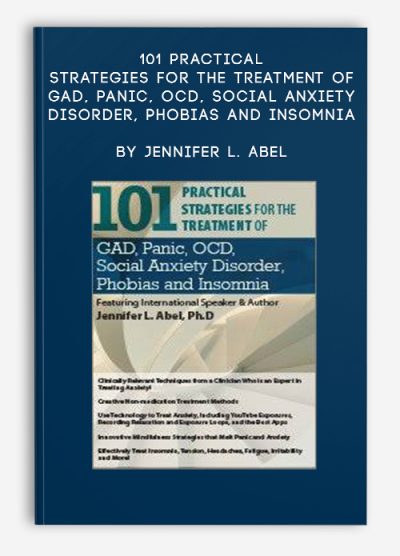


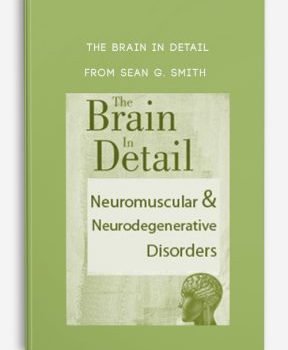

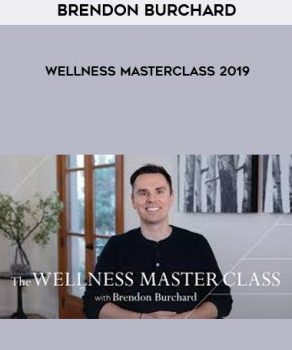




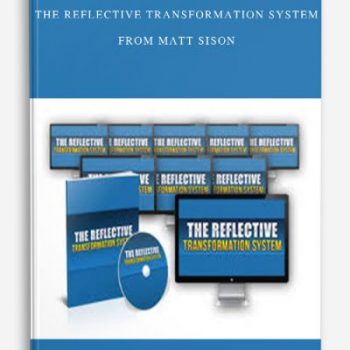
tristian –
This is Digital Download service, the course is available at Coursecui.com and Email download delivery.